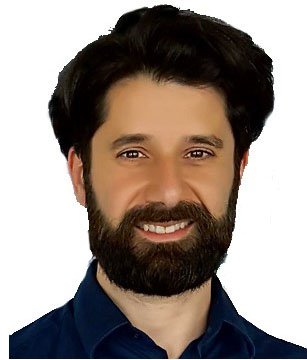Invited Speaker

Dr. Camillo Porcaro
Professor, Department of Neuroscience and Padova Neuroscience Center (PNC), University of Padova, ItalySpeech Title: P3b amplitude as a signature of cognitive decline in the older population: An EEG study enhanced by Functional Source Separation
Abstract: With the greying population, it is increasingly necessary to establish robust and individualized markers of cognitive decline. This requires the combination of well-established neural mechanisms and the development of increasingly sensitive methodologies. The P300 event-related potential (ERP) has been one of the most heavily investigated neural markers of attention and cognition, and studies have reliably shown that changes in the amplitude and latency of the P300 ERP index the process of aging. However, it is still not clear whether either the P3a or P3b sub-components additionally index levels of cognitive impairment. Here, we used a traditional visual three-stimulus oddball paradigm to investigate both the P3a and P3b ERP components in sixteen young and thirty-four healthy elderly individuals with varying degrees of cognitive ability. EEG data extraction was enhanced through the use of a novel signal processing method called Functional Source Separation (FSS) that increases signal-to-noise ratio by using a weighted sum of all electrodes rather than relying on a single, or a small sub-set, of EEG channels. Whilst clear differences in both the P3a and P3b ERPs were seen between young and elderly groups, only P3b amplitude differentiated older people with low memory performance relative to IQ from those with consistent memory and IQ. A machine learning analysis showed that P3b amplitude (derived from FSS analysis) could accurately categorize high and low-performing elderly individuals (78% accuracy). A comparison of Bayes Factors found that differences in cognitive decline within the elderly group were 87 times more likely to be detected using FSS compared to the best performing single electrode (Cz). In conclusion, we propose that P3b amplitude could be a sensitive marker of early, age-independent, episodic memory dysfunction within a healthy older population. In addition, we advocate for the use of more advanced signal processing methods, such as FSS, for detecting subtle neural changes in clinical populations.
Keywords: P300, P3a/P3b, Aging, Cognitive impairment, Functional Source Separation (FSS), Electroencephalography (EEG), Support vector machine learning
Biography: Prof. Porcaro is a computational neuroscientist with an interest in the development of novel analysis methods to extract information from non-invasive measures of brain activity. After a Ph.D. in Neuroimaging, at the University of Chieti (Italy) in 2008, he moved to the University of Birmingham for a post-doc on multimodal brain imaging. In 2011, he joined the Institute of Neuroscience, Newcastle University, after being awarded a highly competitive independent research position. In 2012, Prof. Porcaro moved back to Italy, where he has held an Independent Research Position at the Institute of Cognitive Sciences and Technologies (ISTC) – National Research Council (CNR), Rome, Italy. In 2014 and 2015, he was invited as Visiting Professor at the Neural Control of Movement Lab, Department of Health Sciences and Technologies ETH, Zurich, Switzerland. From 2016 to 2020, he has also been Visiting Professor at the Department of Human Kinesiology, Movement Control & Neuroplasticity Research Group, KU Leuven, Belgium. Since 2015, Prof. Porcaro is Adjunct Professor at Department of Information Engineering – Università Politecnica delle Marche, Ancona. From 2021, he becomes an Associate Professor at the Department of Neuroscience & Padova Neuroscience Center (PNC), University of Padova, Padova, Italy. Prof. Porcaro has published around 100 full papers in international scientific journals.
